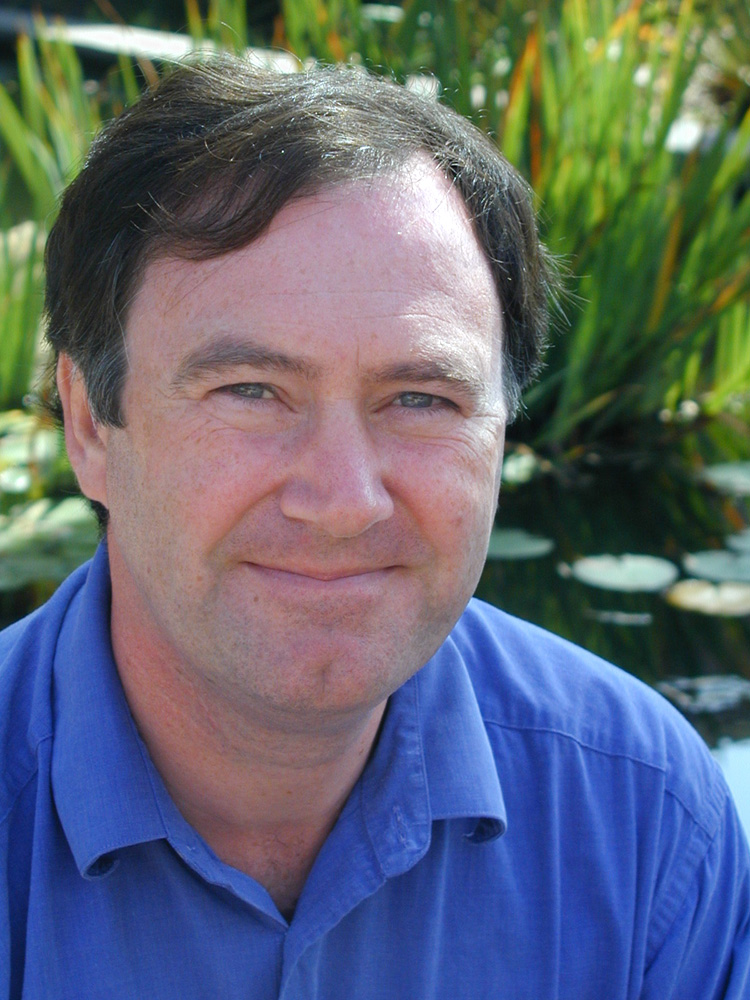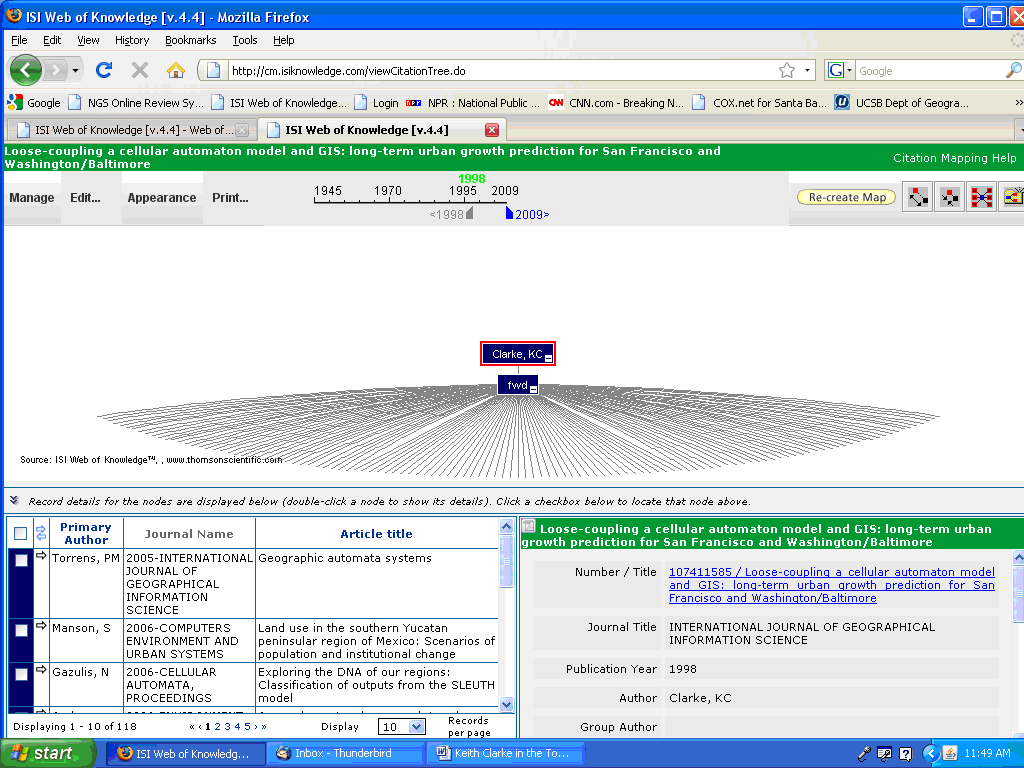An International Journal of Geographical Information Science article coauthored by Professor Keith Clarke in 1998 remains among the top ten most cited papers for the journal. The article, “Loose-coupling a cellular automaton model and GIS: long-term urban growth prediction for San Francisco and Washington/Baltimore” (Clarke, K.C. & Gaydos, L. J. 1998. IJGIS 12(7), 699-714) deals with the use of a discrete model to predict urban growth and has been cited 141 times to date. To quote the abstract:
Prior research developed a cellular automaton model that was calibrated by using historical digital maps of urban areas and can be used to predict the future extent of an urban area. The model has now been applied to two rapidly growing, but remarkably different urban areas: the San Francisco Bay region in California and the Washington/Baltimore corridor in the Eastern United States. This paper presents the calibration and prediction results for both regions, reviews their data requirements, compares the differences in the initial configurations and control parameters for the model in the two settings, and discusses the role of GIS in the applications. The model has generated some long term predictions that appear useful for urban planning and are consistent with results from other models and observations of growth. Although the GIS was only loosely coupled with the model, the model’s provision of future urban patterns as data layers for GIS description and analysis is an important outcome of this type of calculation.
To have authored a scholarly paper which is among the top ten cited for a major international journal for a period of more than 10 years is quite an accomplishment. Not only does it indicate the merit, popularity, and impact of the article (and, indirectly, the journal), but it provides a benchmark which other scholars can use to trace the development of concepts. Indeed, the use of such “citation analysis” is a widely used method for ascertaining the value of particular research (for more on this subject, see the online academic database ISI Web of Knowledge). Congratulations to Keith for the distinction of having made such an impact!



